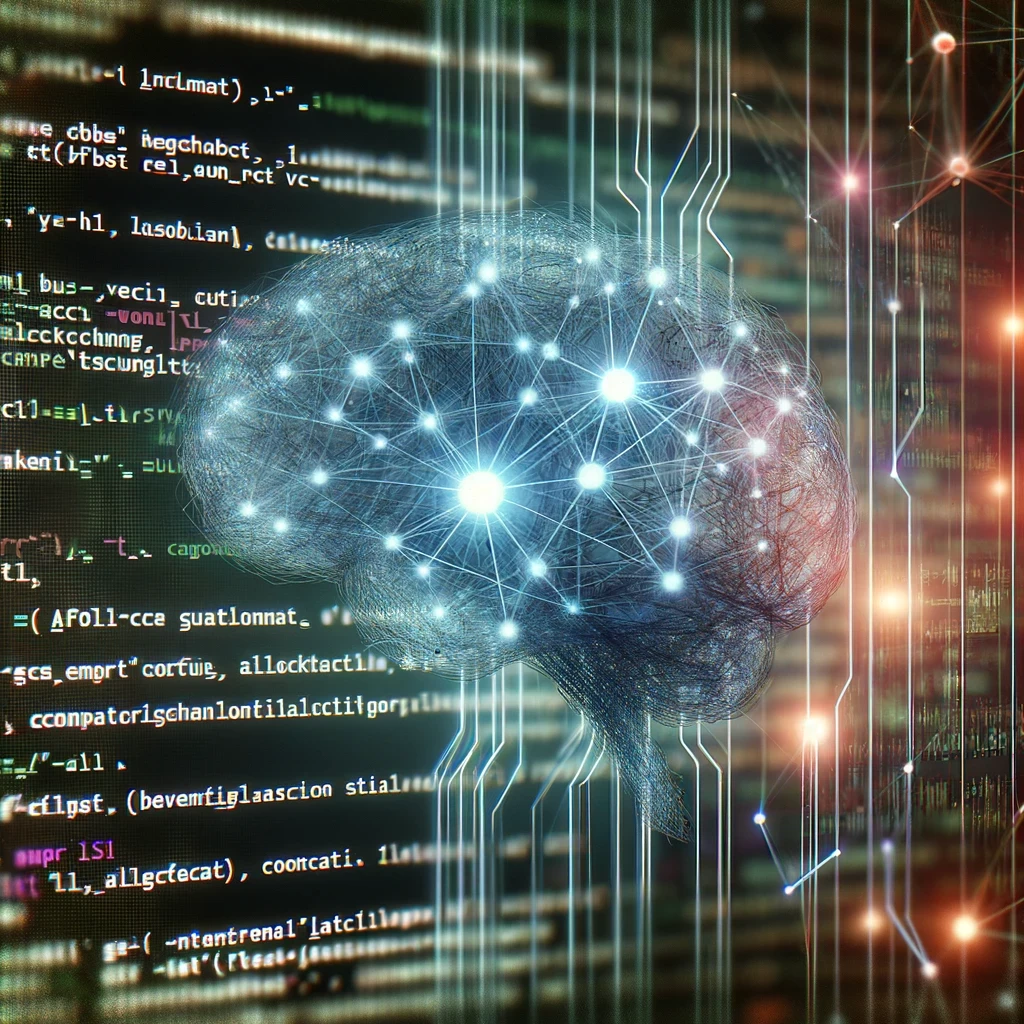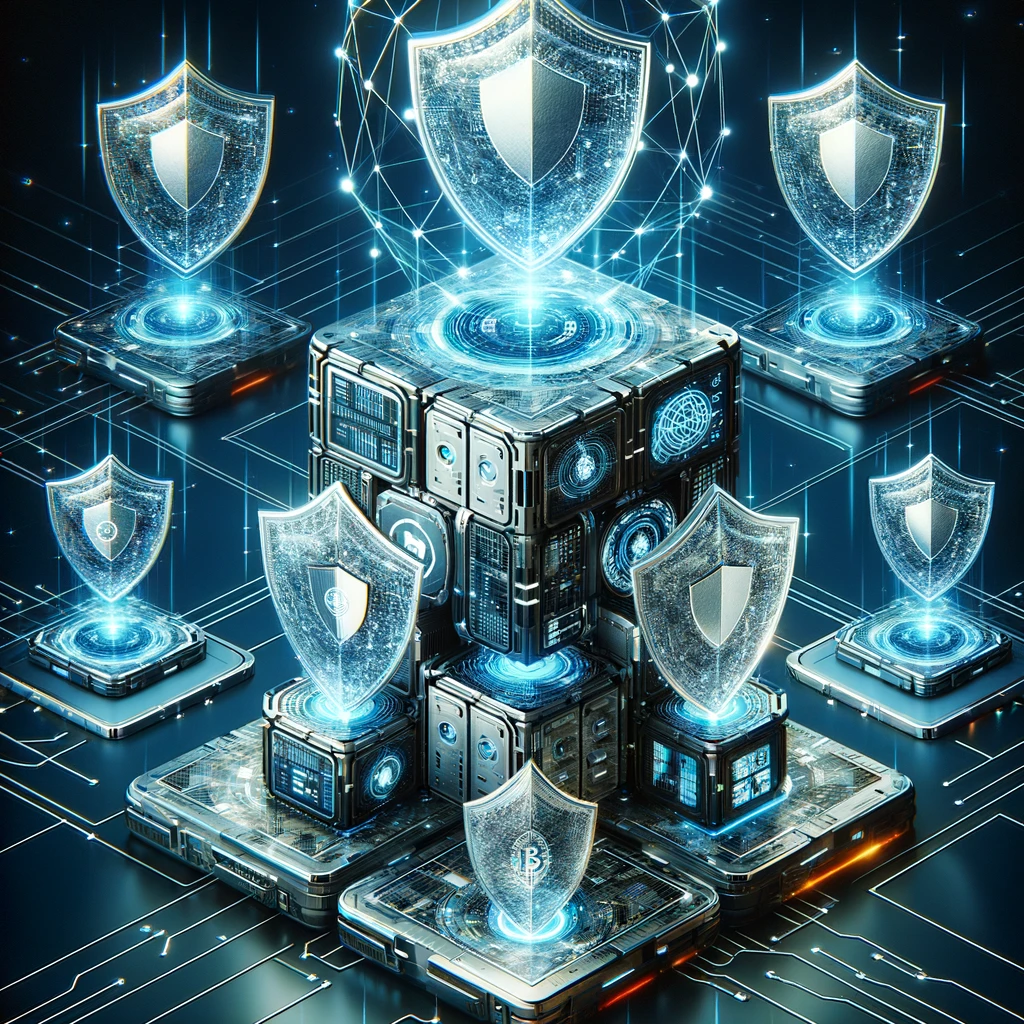The Evolution and Importance of Smart ContractsBlockchain technology has emerged as a revolutionary force in the digital world, reshaping how we conduct transactions and interact online. At the heart of this transformation are smart contracts. These digital contracts execute automatically when predefined conditions are met, coded directly into the blockchain. They have become fundamental to decentralized applications (dApps), which range across various sectors from finance, and insurance, to supply chain management.
Smart contracts offer numerous advantages, including increased transparency, reduced costs, and enhanced efficiency. They eliminate intermediaries, reduce the potential for disputes, and ensure the terms of an agreement are executed exactly as set out. This automation and trustworthiness make smart contracts a critical component of the blockchain ecosystem.
Challenges Posed by Smart Contract VulnerabilitiesHowever, the increasing reliance on smart contracts has also spotlighted a significant challenge: vulnerabilities within these digital agreements. These vulnerabilities can be exploited by malicious actors, leading to unauthorized actions such as theft or manipulation of data. The decentralized and immutable nature of blockchain means that once a smart contract is executed, it cannot be altered, making any exploitation potentially catastrophic. High-profile incidents involving smart contract vulnerabilities have resulted in substantial financial losses and have raised questions about the security and reliability of blockchain-based systems.
A Novel Approach to Tackling Smart Contract VulnerabilitiesIn response to these challenges, a groundbreaking study by Xueyan Tang and his team of researchers, including Yuying Du, Alan Lai, Ze Zhang, and Lingzhi Shi, represents a beacon of hope. Their research explores the use of deep learning to detect and address vulnerabilities in smart contracts. This approach signifies a paradigm shift from traditional methods, leveraging the advanced capabilities of AI to provide a more robust and effective solution for identifying and mitigating potential security risks in smart contracts.
Their work is not only crucial for enhancing the security of blockchain technology but also paves the way for more reliable and trustworthy digital transactions. By addressing these vulnerabilities, the research contributes significantly to the stability and growth of blockchain applications, ensuring they continue to play a transformative role in various sectors.
Understanding Smart Contracts and Their Vulnerabilities
Mechanics of Smart Contracts
At its core, a smart contract is a set of programmable logic and instructions executed on a blockchain. It is essentially a digital agreement where the terms are written in code, and the contract self-executes when predetermined conditions are met. These contracts are stored on a blockchain, making them immutable and distributed, meaning once deployed, they cannot be altered, and their execution is transparent and verifiable by all parties involved.
The execution of a smart contract begins when an initiating action, like a transaction or a signal from another contract, triggers it. For example, in a supply chain smart contract, the delivery confirmation of a product might trigger the automatic release of payment. The blockchain ensures that the smart contract is executed exactly as written, without the need for intermediaries, making the process faster, cheaper, and more reliable than traditional contract law.
Types of Vulnerabilities in Smart ContractsSmart contract vulnerabilities stem from various sources, often related to how the contract is written and how the blockchain executes it. Some common vulnerabilities include:
- Reentrancy Attacks: One of the most infamous types of attacks, best exemplified by the DAO hack in 2016, where attackers drained millions of dollars. This occurs when a malicious contract calls back into the original contract before the first execution completes, manipulating the contract’s state.
- Arithmetic Issues: Issues like overflow and underflow, where variables exceed their maximum or minimum value, can lead to unintended contract behavior.
- Timestamp Dependence: Contracts that rely on timestamps for execution can be manipulated, as miners have some control over the timestamps of the blocks they mine.
- Gas Limit and Loops: Infinite loops or functions that require excessive gas can render a contract unusable or cause it to fail.
- Visibility and Access Control Issues: If functions are not properly restricted, unauthorized users may access and execute them.
- Unchecked Return Values for Low-Level Calls: When return values from low-level calls are not checked, it can lead to unexpected behaviors in the contract.
Consequences of VulnerabilitiesThe consequences of these vulnerabilities are severe, ranging from financial loss to reputational damage. The immutable nature of blockchain means that once a vulnerability is exploited, reversing the damage is incredibly challenging. This not only leads to direct financial loss but also shakes the confidence of users and investors in the blockchain ecosystem.
Real-World Examples of Smart Contract Failures
- The DAO Attack: The most notorious smart contract failure is the DAO (Decentralized Autonomous Organization) attack. In 2016, a reentrancy vulnerability in the DAO's smart contract was exploited, leading to the theft of over $50 million worth of Ether. This incident not only caused substantial financial loss but also led to a hard fork in the Ethereum blockchain, resulting in Ethereum and Ethereum Classic.
- Parity Wallet Freeze: In 2017, a vulnerability in the Parity Wallet's smart contract led to users permanently losing access to their funds. A user accidentally triggered a function that converted the contract into a multi-sig wallet and then self-destructed it, freezing over $150 million worth of Ether.
- Integer Overflow in BEC Token: BeautyChain (BEC) token experienced an integer overflow vulnerability in 2018. Attackers exploited this to generate an enormous amount of BEC tokens, leading to a temporary suspension of trading and a significant drop in the token's value.
Mitigating VulnerabilitiesGiven these risks, it's crucial for developers to rigorously test and audit smart contracts before deployment. Utilizing best practices in coding, learning from past failures, and leveraging advancements in security technology like the deep learning approaches in Tang's research are essential steps in mitigating these vulnerabilities.
Traditional Approaches to Vulnerability Detection
Overview of Conventional Methods
In the realm of smart contract security, traditional approaches predominantly hinge on static analysis. Static analysis involves scrutinizing the source code of a smart contract without executing it. This method checks the code against a predefined set of rules or patterns that are known to be indicators of vulnerabilities or bad practices. Tools commonly used for static analysis include Slither, Mythril, and Oyente. These tools parse the code, build a control flow graph, and then systematically inspect each path for potential vulnerabilities.
Static Analysis in Practice
For instance, a static analysis tool may scan for known security pitfalls like reentrancy, transaction-ordering dependence, or unchecked external calls. By comparing the contract’s code against a database of known vulnerabilities, these tools can flag areas of concern. This approach is akin to proofreading a document for spelling and grammatical errors based on a fixed set of rules.
Limitations in Accuracy and Adaptability
However, the effectiveness of static analysis is hampered by several limitations. Firstly, the accuracy of these tools is not absolute. They rely heavily on the comprehensiveness and currency of their vulnerability databases. If a new type of vulnerability emerges that is not yet in the database, the static analysis tool may fail to detect it.
Additionally, smart contracts are often complex and dynamic, with interactions that might not be fully captured through static analysis. The binary nature of the rules used in static analysis can lead to oversimplifications of such complexities. Consequently, these tools might not fully understand the context or the business logic behind the code, leading to misinterpretation of its intent.
False Positives and Negatives
A significant challenge with traditional methods is the issue of false positives and negatives. False positives occur when the tool incorrectly flags a piece of code as vulnerable when it is not. This can lead to unnecessary alarm and wasted effort in addressing non-issues. On the other hand, false negatives are more critical – they happen when a tool fails to identify an actual vulnerability. This gives a false sense of security and leaves the contract open to exploitation.
The root cause of these inaccuracies often lies in the static nature of the analysis. Since the tools do not execute the code, they can miss vulnerabilities that only manifest during runtime or under specific conditions. Furthermore, the ever-evolving landscape of smart contract development means that new patterns of vulnerabilities are constantly emerging, which static tools might not be updated to detect.
Case Examples of Limitations
For example, in the case of the DAO attack, many static analysis tools at the time were unable to detect the reentrancy vulnerability that led to the exploit. Similarly, tools might flag common coding patterns as vulnerabilities due to their resemblance to known issues, leading to a high volume of false positives that can overwhelm developers.
The Need for More Advanced and Dynamic Solutions
These limitations underscore the need for more advanced and dynamic approaches in vulnerability detection. As smart contracts become more complex and integral to blockchain ecosystems, the tools and methods used to secure them must evolve correspondingly.
Dynamic analysis, which involves testing and evaluating the contract in a runtime environment, can offer more accurate insights. However, even this approach has its limitations, such as the difficulty in replicating all possible states and inputs a contract might encounter.
The advent of machine learning and, more specifically, deep learning, presents a promising alternative. By leveraging large datasets of smart contract code, both benign and malicious, deep learning models can learn and adapt to a wide range of vulnerabilities, including new and emerging ones. These models can potentially understand the context and nuanced behaviors of smart contracts better than traditional rule-based systems, reducing the rates of false positives and negatives.
Furthermore, the integration of deep learning into vulnerability detection tools can bring a level of adaptability and learning capability that static and even dynamic analysis tools lack. This could lead to a new generation of security tools that continuously learn and evolve alongside the smart contracts they are designed to protect, offering a more robust and effective defense against the ever-changing landscape of vulnerabilities.
Deep Learning: A Paradigm Shift in Vulnerability Detection
Introduction to Deep Learning and Its Relevance to Cybersecurity
Deep learning, a subset of machine learning, has emerged as a transformative force in the field of artificial intelligence. It involves neural networks with multiple layers that mimic the human brain's ability to learn from vast amounts of data. These networks can extract and interpret complex patterns and relationships within the data, making deep learning particularly effective in fields requiring high levels of data analysis, including cybersecurity.
In cybersecurity, deep learning algorithms can process and analyze large datasets of code, network traffic, and user behavior to identify potential threats and anomalies. Unlike traditional methods that rely on predefined rules, deep learning systems learn and adapt from the data, enabling them to detect new and sophisticated cyber threats, including those in smart contracts.
How Deep Learning Differs from Traditional Computational Methods
Traditional computational methods in cybersecurity, like static and dynamic analysis, operate based on predefined rules and patterns. These methods are limited in their ability to adapt to new threats that don't fit into their existing rule sets. In contrast, deep learning models don't require explicit programming to identify threats. Instead, they use algorithms to process and learn from data, continuously improving their accuracy and effectiveness.
Deep learning models are capable of feature extraction, which means they can automatically identify and prioritize the most relevant features in the data for making accurate predictions. This ability is particularly valuable in detecting vulnerabilities in smart contracts, where the indicators of a threat may not be immediately obvious or may evolve.
The Potential of Deep Learning in Understanding Complex Patterns
One of the most significant advantages of deep learning is its ability to understand complex and nuanced patterns in data. Smart contracts, often written in languages like Solidity, can contain intricate logic and interactions that are difficult to decipher using traditional methods. Deep learning models can analyze these contracts in their entirety, learning the normal patterns of code and identifying deviations that may indicate vulnerabilities.
Furthermore, deep learning models can process and analyze data more holistically. Instead of looking at individual pieces of code in isolation, these models can understand the context within which the code operates. This holistic approach is crucial in identifying vulnerabilities that may arise from the interactions between different parts of a contract or from the contract’s interaction with external factors.
Overview of the 'Lightning Cat' Approach by Xueyan Tang's Team
Xueyan Tang and his team's research on 'Lightning Cat' represents a significant advancement in the use of deep learning for smart contract vulnerability detection. This approach utilizes three distinct deep learning models – Optimized-CodeBERT, Optimized-LSTM, and Optimized-CNN – each bringing a unique strength to the detection process.
- Optimized-CodeBERT: CodeBERT is a pre-trained model developed specifically for programming languages. It's based on the transformer architecture, which has been highly successful in natural language processing. The Optimized-CodeBERT in Lightning Cat leverages this model to understand the syntax and semantics of smart contract code, making it adept at identifying vulnerabilities that traditional methods might miss.
- Optimized-LSTM (Long Short-Term Memory): LSTM networks are a type of recurrent neural network (RNN) particularly effective in processing sequential data. In the context of smart contracts, the Optimized-LSTM model can understand the sequence and flow of operations within a contract, detecting vulnerabilities that arise from the order of execution and temporal dependencies.
- Optimized-CNN (Convolutional Neural Network): CNNs are well-known for their success in image processing but are equally effective in analyzing two-dimensional data structures. The Optimized-CNN in Lightning Cat is used to examine the structural and spatial aspects of smart contract code, identifying patterns that may indicate security flaws.
Each of these models processes the smart contract data differently, providing a comprehensive analysis that covers various aspects of the code. This multi-faceted approach allows Lightning Cat to detect a wider range of vulnerabilities with higher accuracy than traditional methods.
Additionally, the models within Lightning Cat are trained on extensive datasets comprising various smart contracts, allowing them to learn from real-world examples of both secure and vulnerable code. This training enables the models to adapt to new and emerging vulnerabilities, a significant advantage over traditional methods that may become outdated as new threats arise.
Diving into Lightning Cat: The Optimized Models
In-depth Analysis of the Optimized-CodeBERT Model
The Optimized-CodeBERT model, a cornerstone of the Lightning Cat project, stands out for its proficiency in understanding the textual content of smart contracts. CodeBERT, its foundational model, is trained on a vast corpus of programming code, making it adept at deciphering programming languages, including those used in smart contracts like Solidity.
Optimized-CodeBERT goes a step further by integrating additional layers of optimization tailored specifically for smart contract code. This optimization allows the model to better grasp the nuances and contextual subtleties of smart contract languages. The model's ability to understand both the syntax (structure) and semantics (meaning) of code is pivotal in identifying vulnerabilities that might elude traditional pattern-matching methods. For instance, it can discern potentially unsafe external calls or improper handling of cryptographic functions.
Understanding the Optimized-LSTM Model and Its Applications
The Optimized-LSTM (Long Short-Term Memory) model is another critical component of Lightning Cat, specifically designed to handle sequential data. Unlike traditional neural networks that treat all inputs independently, LSTM networks can remember information over time, making them ideal for analyzing the flow and order of operations in smart contracts.
In the context of smart contracts, this sequential understanding is crucial. Certain vulnerabilities, such as those related to state changes or transaction order dependencies, can only be detected by analyzing the order in which operations occur. The Optimized-LSTM model tracks these sequences, identifying vulnerabilities that emerge from the flow of data and logic within the contract. This capability is particularly valuable in detecting complex vulnerabilities that manifest over multiple transactions or contract states.
Insights into the Optimized-CNN Model and Its Unique Capabilities
Convolutional Neural Networks (CNNs) have been widely used in image recognition due to their ability to detect patterns in two-dimensional data. The Optimized-CNN model in Lightning Cat adapts this capability for the analysis of smart contract code. By treating code as a two-dimensional structure, the model can efficiently extract local and spatial features.
This feature extraction is vital in identifying vulnerabilities related to the structural aspects of code, such as the arrangement of functions and variables. For example, an Optimized-CNN might be adept at spotting vulnerabilities arising from the improper structuring of access control mechanisms or detecting anomalies in the way functions interact with each other.
Comparative Analysis of the Three Models in Detecting Vulnerabilities
When combined, these three models provide a comprehensive analysis of smart contracts from different perspectives: textual (Optimized-CodeBERT), sequential (Optimized-LSTM), and structural (Optimized-CNN). Each model brings its unique strengths to the table, making the Lightning Cat approach versatile and robust.
While Optimized-CodeBERT excels in understanding the code's language and semantics, Optimized-LSTM provides insights into the temporal dynamics of the contract's execution. Meanwhile, Optimized-CNN offers a unique view of the contract’s structural layout and patterns. Together, they cover a broad spectrum of potential vulnerabilities, from simple syntactic errors to complex logical flaws.
Experimental Findings and Analysis
Detailed Discussion on the Experimental Setup and Dataset Used
The effectiveness of the Lightning Cat models was evaluated using a comprehensive experimental setup. The team utilized a dataset comprising thousands of real-world smart contracts, including both secure and vulnerable examples. This dataset was carefully curated to represent a wide range of smart contract use cases and vulnerabilities, ensuring a thorough evaluation of the models.
Analysis of the Performance Metrics like F1-Score and Accuracy
In assessing the models, key performance metrics such as F1-score and accuracy were prioritized. The F1-score, which balances precision and recall, is particularly important in this context as it reflects the model's ability to correctly identify vulnerabilities (precision) without incorrectly labeling secure code as vulnerable (recall). High accuracy further indicates the model’s overall effectiveness in classifying contracts correctly.
Comparative Analysis with Traditional Methods
When compared to traditional vulnerability detection methods, the Lightning Cat models demonstrated superior performance. They were not only more accurate in detecting known vulnerabilities but also showed a remarkable ability to adapt to new and previously unseen types of vulnerabilities. This adaptability is a significant advantage over static analysis tools, which are limited to detecting vulnerabilities based on predefined patterns.
Discussion on the Strengths and Limitations of the Lightning Cat Approach
While the results were promising, the research team acknowledged certain limitations. For instance, the models' performance is contingent on the quality and diversity of the training data. Inadequate or biased training data could limit the models’ effectiveness. Additionally, the complex nature of deep learning models means they require significant computational resources, potentially limiting their accessibility for some users.
Despite these limitations, the Lightning Cat approach represents a significant advancement in smart contract security. Its use of deep learning models to analyze contracts from multiple angles offers a more robust and comprehensive detection of vulnerabilities than traditional methods. As blockchain technology continues to evolve, tools like Lightning Cat will be crucial in ensuring the security and reliability of
Broader Implications and Future Applications
The Potential Impact of Deep Learning on Smart Contract Security
The application of deep learning in smart contract security, as exemplified by the Lightning Cat project, marks a watershed moment in the evolution of blockchain technology. By harnessing the power of deep learning, developers and security experts can significantly enhance the robustness of smart contracts against a wide array of vulnerabilities. The ability of models like Optimized-CodeBERT, Optimized-LSTM, and Optimized-CNN to learn from vast datasets and adapt to new patterns of vulnerabilities offers a dynamic defense mechanism, far superior to static rule-based systems. This paradigm shift has the potential to drastically reduce the frequency and impact of smart contract breaches, thereby bolstering trust and reliability in blockchain-based systems.
Future Prospects of Lightning Cat in Other Coding Domains
The principles and methodologies developed in the Lightning Cat project have implications that extend far beyond smart contract security. The versatility of deep learning models means that similar approaches could be employed in various other coding domains. For instance, areas like traditional software development, web application security, and even emerging fields like Internet of Things (IoT) could benefit from the advanced pattern recognition and anomaly detection capabilities of these models. The adaptability of deep learning to different contexts and evolving threat landscapes makes it an invaluable tool in the broader domain of cybersecurity.
The Evolving Landscape of Cybersecurity and the Role of AI
As cyber threats become more sophisticated and pervasive, the role of AI in cybersecurity is set to expand significantly. AI, particularly deep learning, offers a proactive approach to threat detection and response, moving beyond traditional reactive methods. By continuously learning from new data and adjusting its algorithms accordingly, AI can stay ahead of cybercriminals, predicting and mitigating threats before they materialize. The integration of AI into cybersecurity represents a major shift from traditional defense mechanisms, paving the way for more resilient and intelligent security systems.
Final Thoughts on the Future of Blockchain Security
The future of blockchain security, powered by AI and deep learning, looks promising. The integration of these technologies in tools like Lightning Cat is just the beginning of a new era in digital security. As blockchain technology continues to permeate various sectors, the need for robust security mechanisms will only grow. The ongoing development and refinement of AI-driven security tools will be crucial in ensuring the safe and sustainable growth of this transformative technology.
Conclusion
Summarizing the Key Points of the Article
This article has delved into the transformative impact of deep learning on smart contract security, highlighted by the innovative Lightning Cat project. We explored the intricacies of smart contract vulnerabilities, the limitations of traditional detection methods, and how deep learning offers a more effective and adaptable solution. The potential applications of these technologies extend beyond smart contracts, promising to revolutionize the broader field of cybersecurity.
Reflecting on the Importance of Ongoing Research in This Field
The ongoing research in integrating AI into cybersecurity is of paramount importance. As digital threats evolve, so too must our methods of defense. The work of researchers like Xueyan Tang and his team is vital in pushing the boundaries of what is possible, ensuring that blockchain technology can continue to grow securely and reliably.
The Need for Continued Innovation in Blockchain Technology
The blockchain landscape is rapidly evolving, and with it, the complexity and sophistication of associated security challenges. Continued innovation in this space, particularly in the application of AI and deep learning, is essential to address these challenges effectively.
Closing Remarks on the Role of AI in Advancing Cybersecurity
In conclusion, the role of AI in advancing cybersecurity, especially in the context of blockchain and smart contracts, cannot be overstated. As we move forward, the synergy between AI and blockchain will undoubtedly unlock new potentials and pave the way for a more secure digital future.
References and Further Reading
"Deep Learning in Identifying Software Vulnerabilities" - ResearchGate
"Blockchain and Smart Contract Vulnerabilities" - ScienceDirect
"Understanding the Transformer Architecture" - arXiv
For those interested in exploring this topic further, these readings offer valuable insights into the latest research and developments in the fields of AI, deep learning, and blockchain security.







